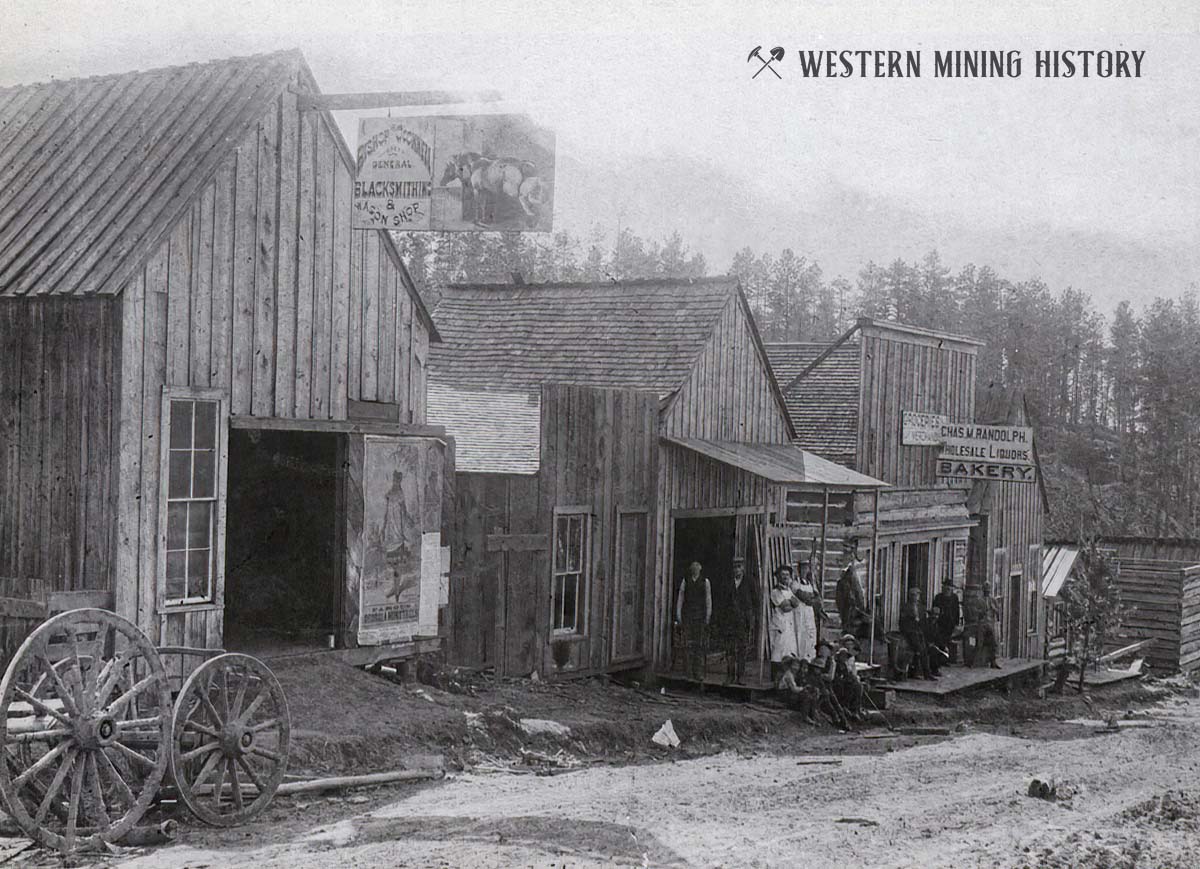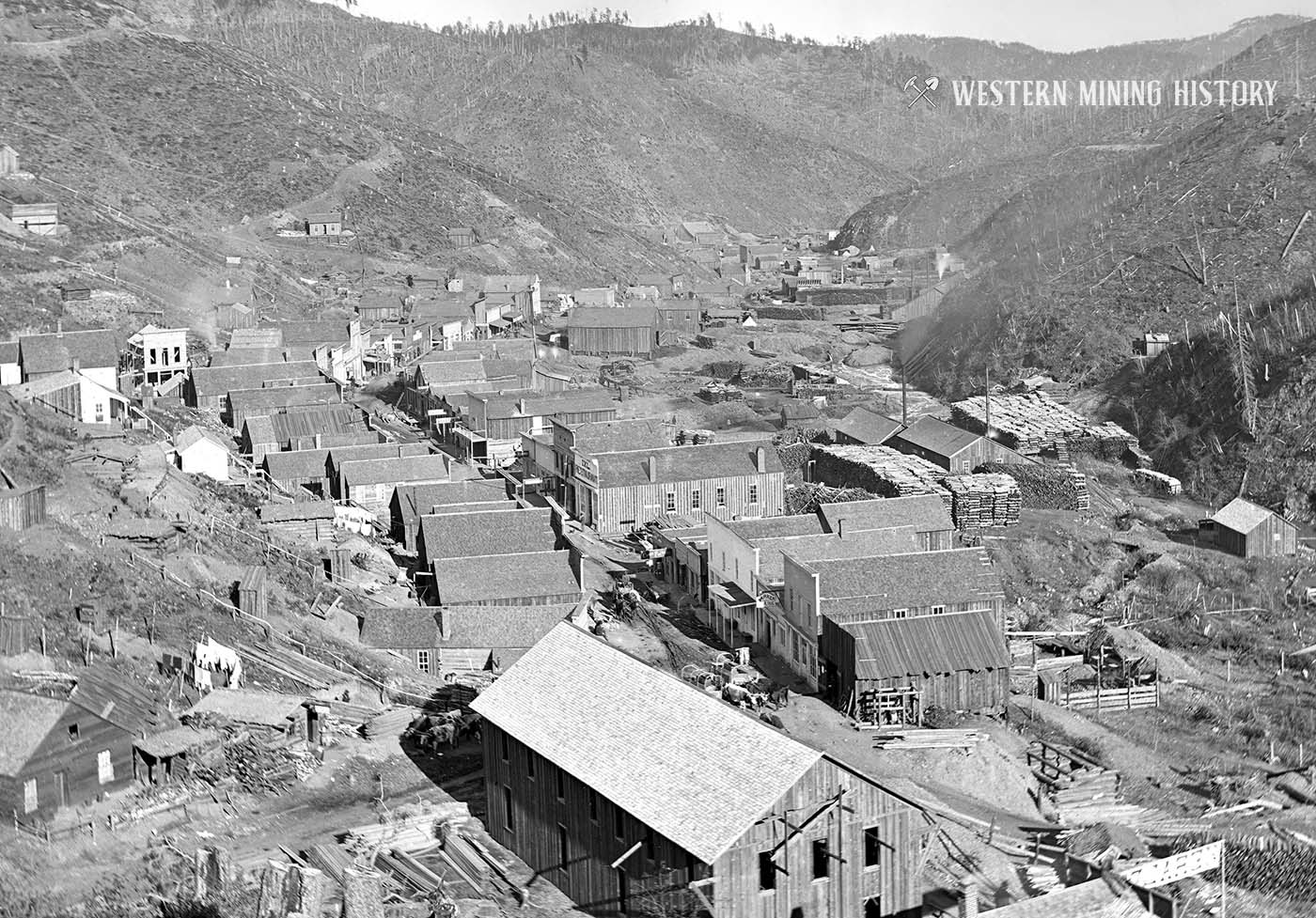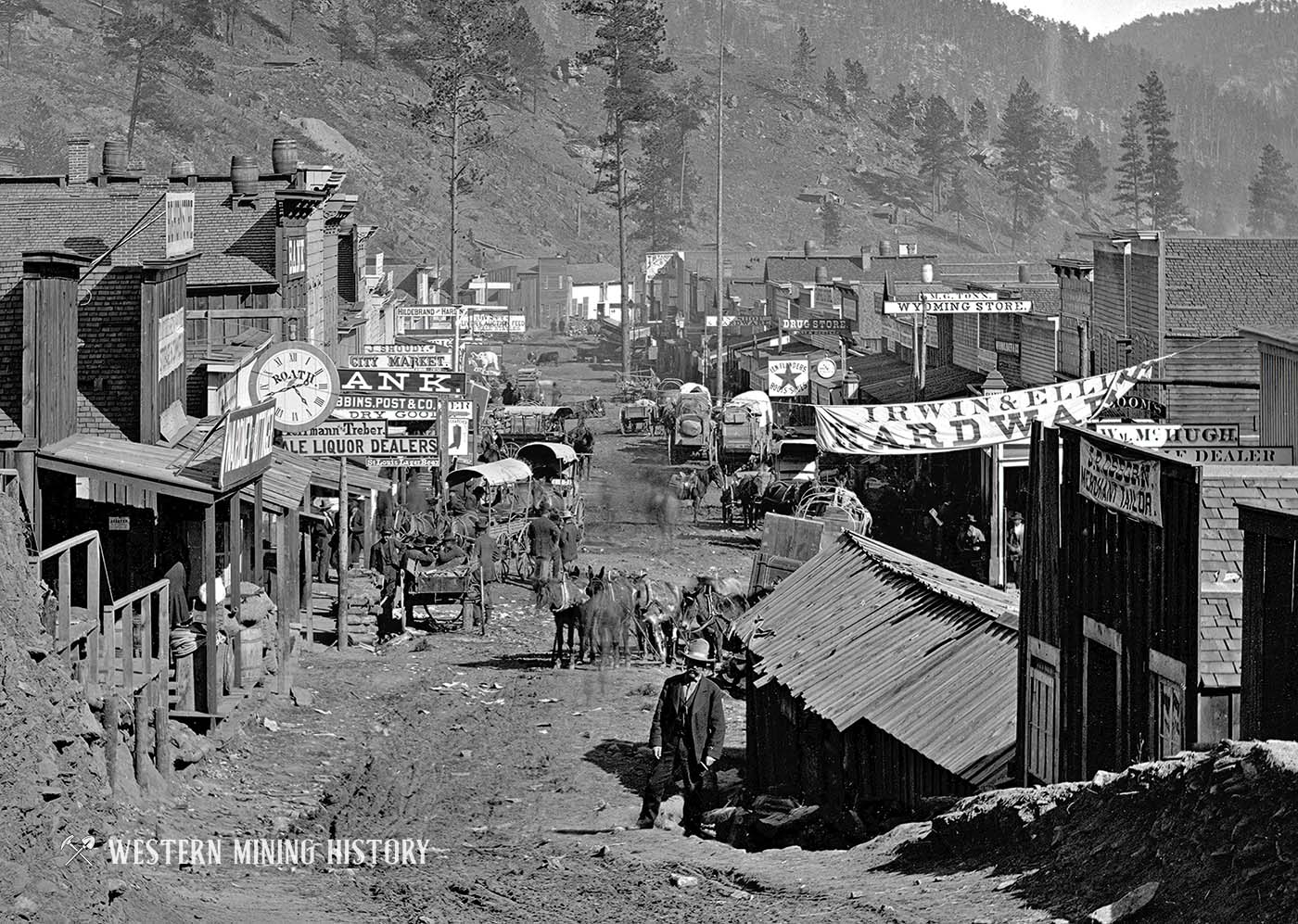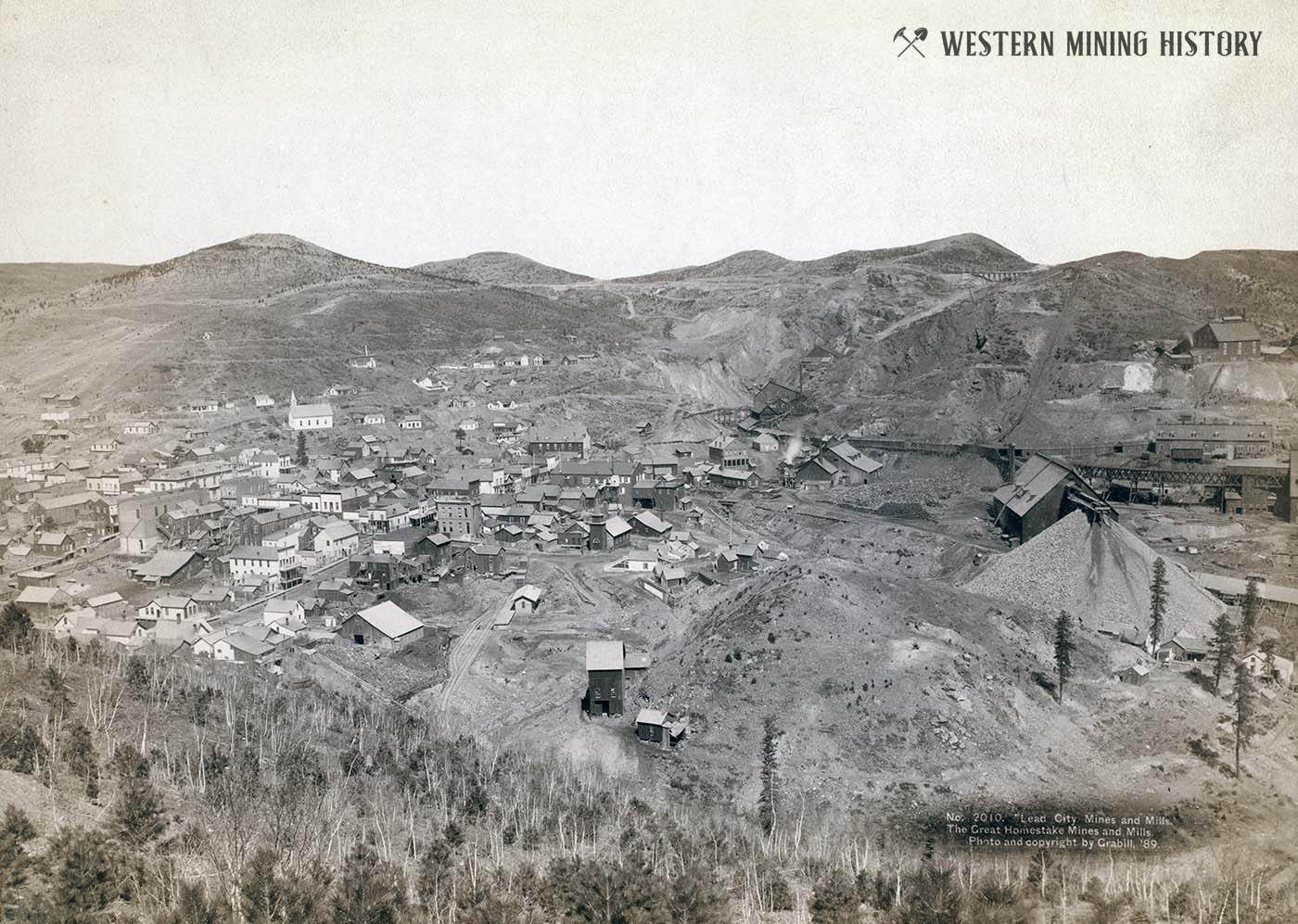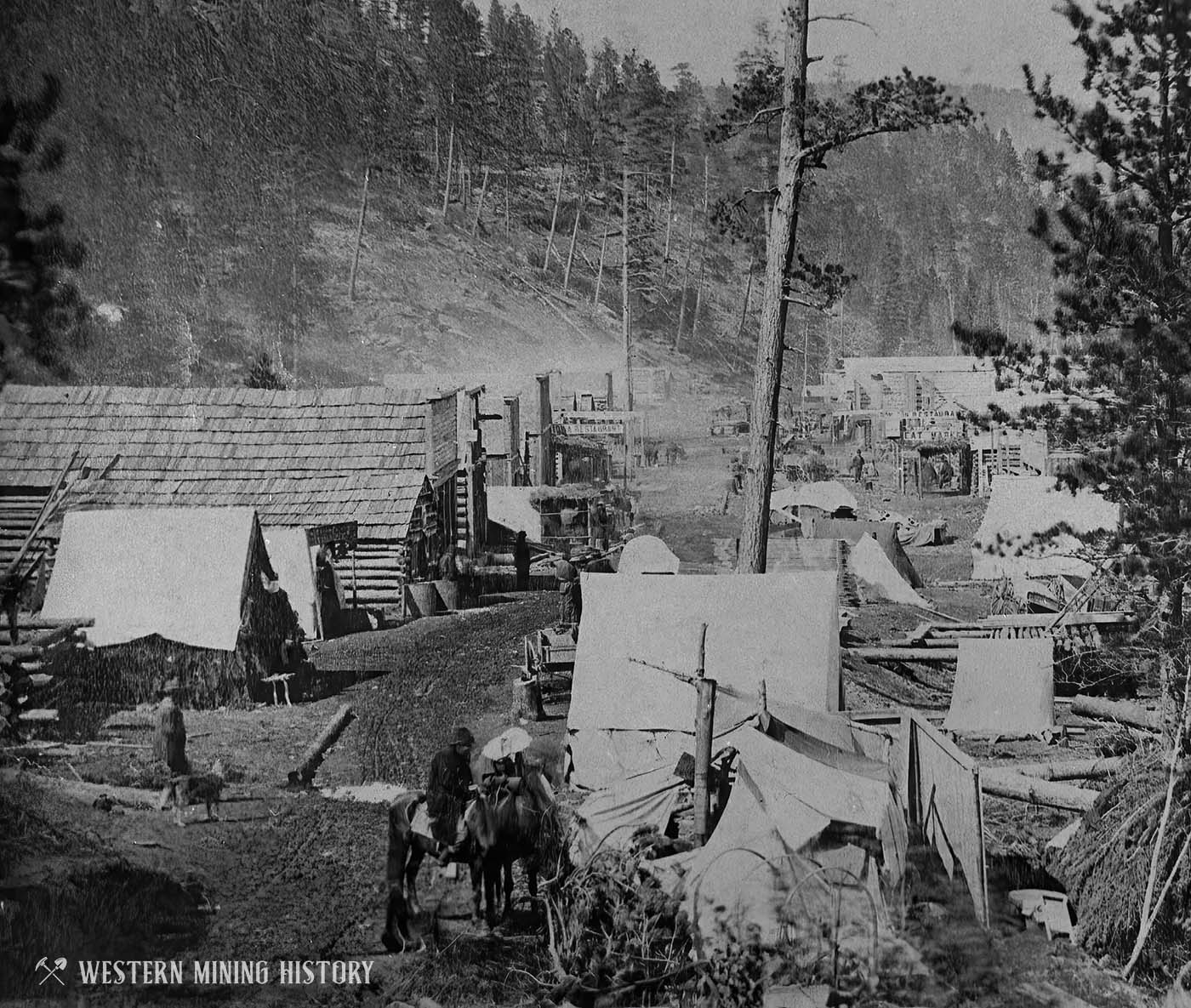Carbonate History
Father and son duo James and L.B. Ridpath discovered the first mine in the area circa 1880. They initially called the settlement that formed here Virginia, after their home state of West Virginia, but it was later renamed Carbonate.
The ores here were characterized by carbonate minerals, and undoubtedly promoters of the mines wanted to be associated with the nation's most famous carbonate ore district - Leadville, Colorado. Indeed, references were made in local newspapers making this comparison.
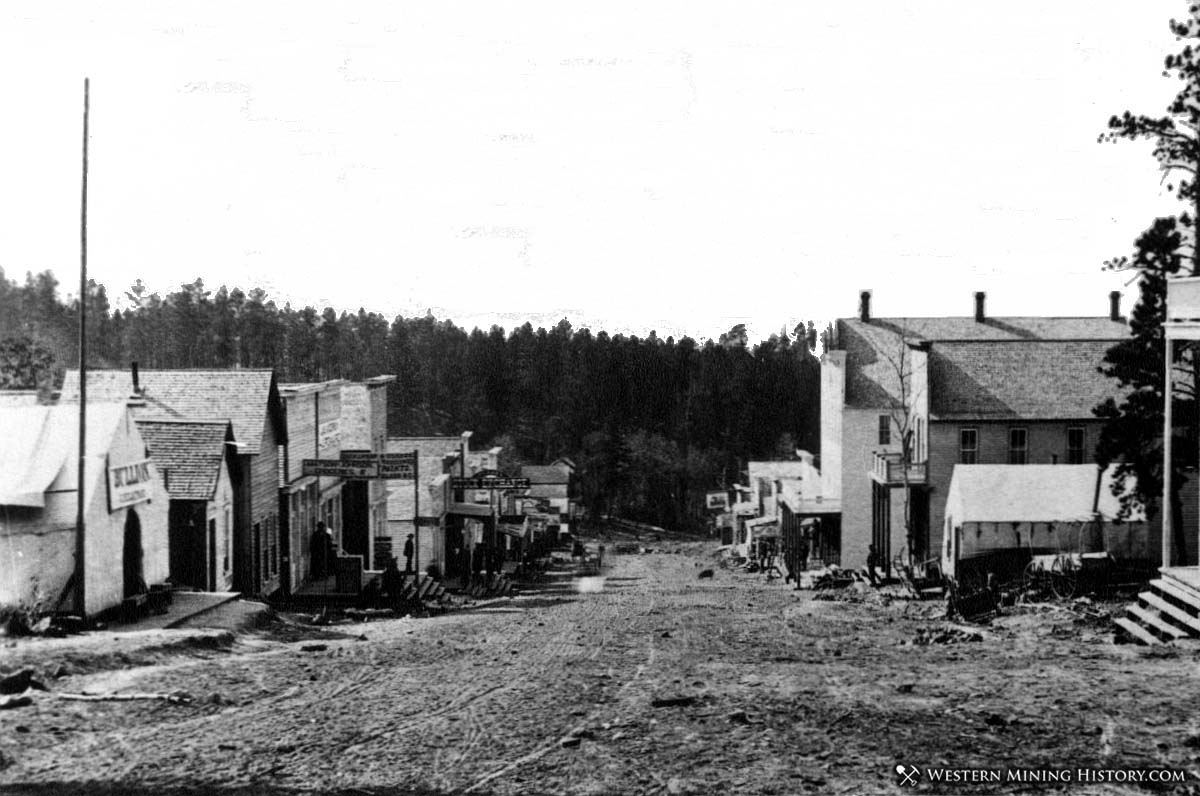
Activity at Carbonate peaked in 1886. The July 21, 1886 edition of the Black Hills Daily Times described the camp:
Carbonate is without doubt the busiest locality, from a muscular point of view, in the entire Black Hills. Everybody in town and for miles around is hard at work, and what a town it is. How different from the typical mining camp that non-visitants understand it to be. Wide streets somewhat abruptly slope towards sunset, 'tis true, but those boulevards are regularly laid out, and are lined with business houses and residences in the highest degree creditable.
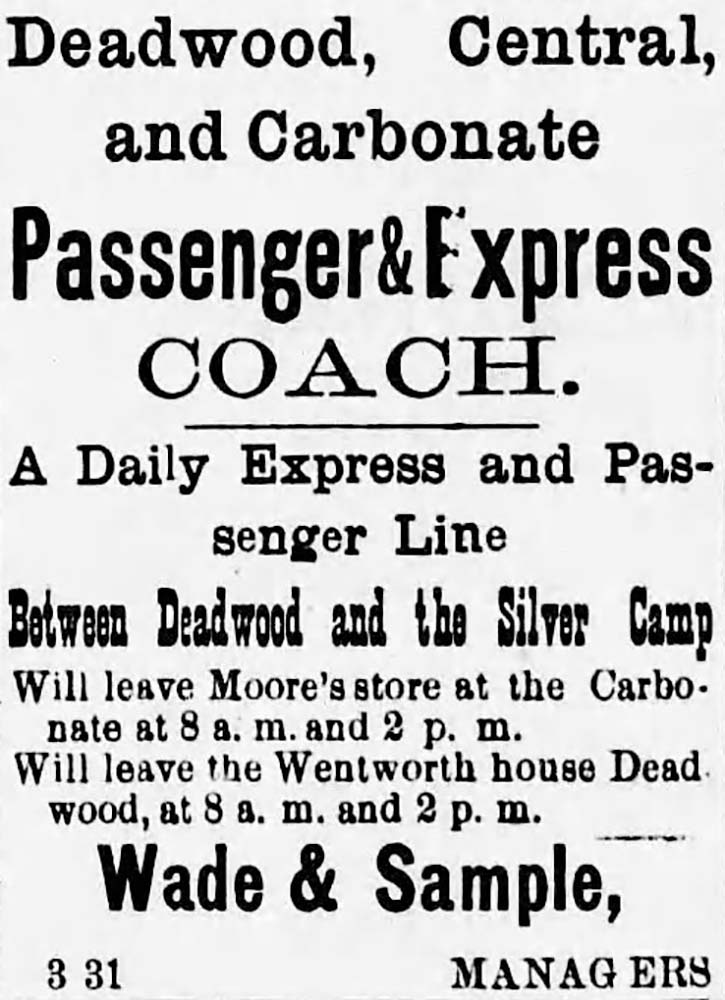
A new hotel rapidly approaches completion, and in dimensions and exterior appearance it surpasses any establishment of the kind in the Black Hills. Business houses of all kinds are numerous, substantial and attractive, contain large stocks of goods, and are presided over by gentlemen with whom intercourse is a pleasure. Charley Randolph, the celebrated "Irish orator," conducts the great resort and headquarters for all Deadwood visitors, and is prospering.
Ferdinand Jensen, representing James Anderson, hardware dealer, and Dickinson & Cornes, druggists and dealers in toilet and fancy articles, conjointly occupy a spacious and handsome building, and, we pleased to add, do a thriving business. A large amount of building is under way, all of the most substantial character, evincing faith in the permanency and prosperity of the district.
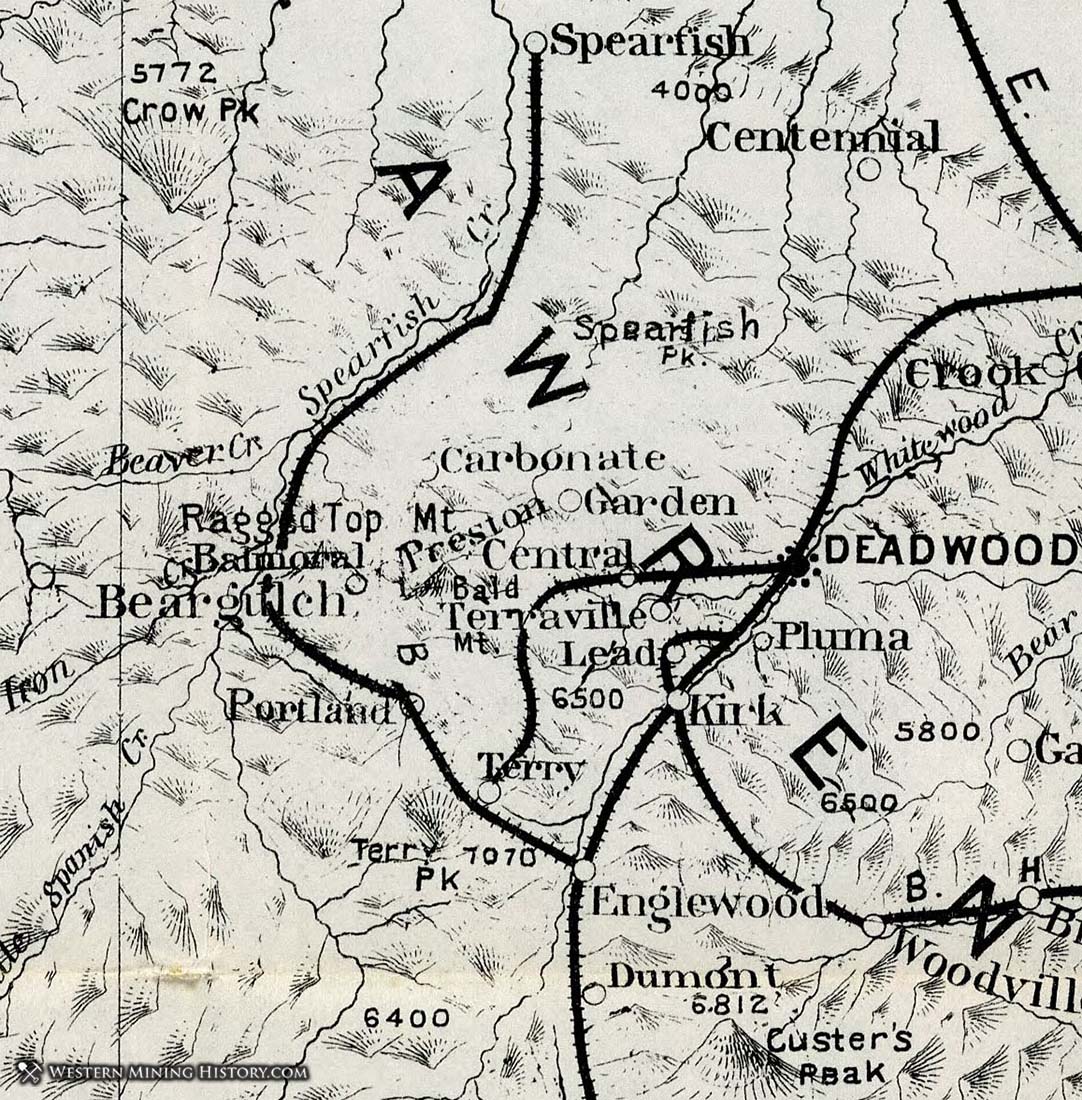
Carbonate prospered for a few years but the silver panic of 1891 ended the silver boom here. By 1900 the population dropped to 380. The town limped along for the rest of the decade but in 1909 the post office was closed. The Iron Hill mine continued to operate into the 1930s, but by the latter part of the decade all the mines were closed, and the last resident of Carbonate died in 1939.
Nearby Mining Towns
These are a selection of notable mining towns near Terry.
Central City
Central City, South Dakota was one of the Black Hills earliest, and most important mining settlements. In 1877, a conflict between the neighboring Aurora and Keets mines resulted in the death of one of the mine owners, and later the same year a strike at the Keets required intervention by Sheriff Seth Bullock and federal troops.
Deadwood
Deadwood, South Dakota is one of the West's most historically significant mining cities, and the location of some of the Wild West's most notable events. Deadwood has seen extensive preservation of its historical buildings, and is a popular tourist center.
Lead
Lead, South Dakota is the location of the Homestake - the nation's greatest gold mine. This mine operated for 125 years and produced over 40 million ounces of gold. As the mine grew, so did Lead, becoming one of the West's most important mining cities.
Mining in the Black Hills
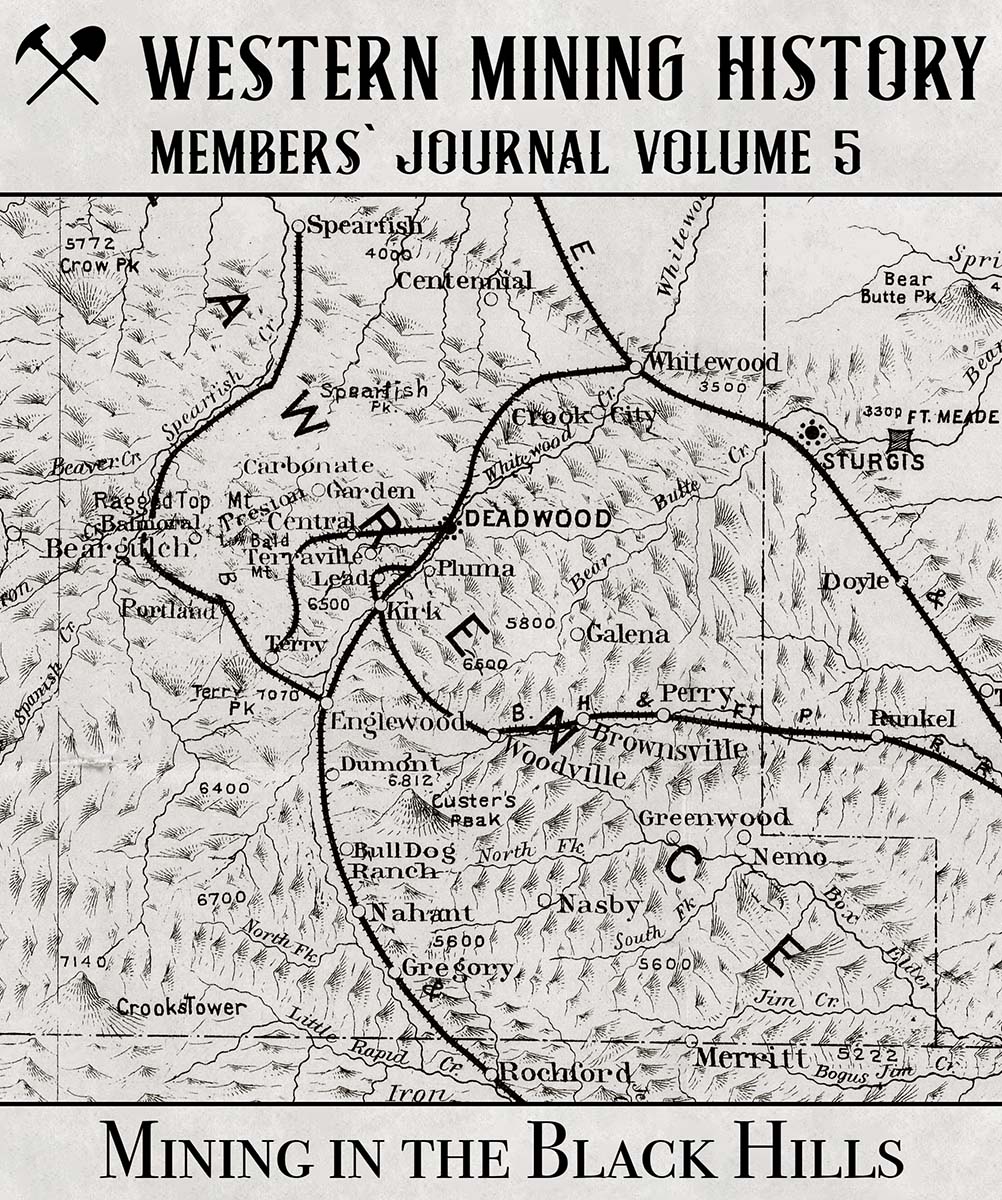
Western Mining History Member's Journal Volume 5: "Mining in the Black Hills", takes a closer look at the distribution of mining districts and towns the Black Hills of South Dakota.
Deadwood: The Ultimate Photo Collection
The Black Hills Gold Rush was one of the most significant historical events in the western United States. Deadwood: The Ultimate Photo Collection contains over 50 images capturing the early history of this famous gold region.
